Last-Minute NYC Holiday Gift Guide 🎁
We’ve created a holiday gift guide with presents for the intrepid New Yorker that should arrive just in time—


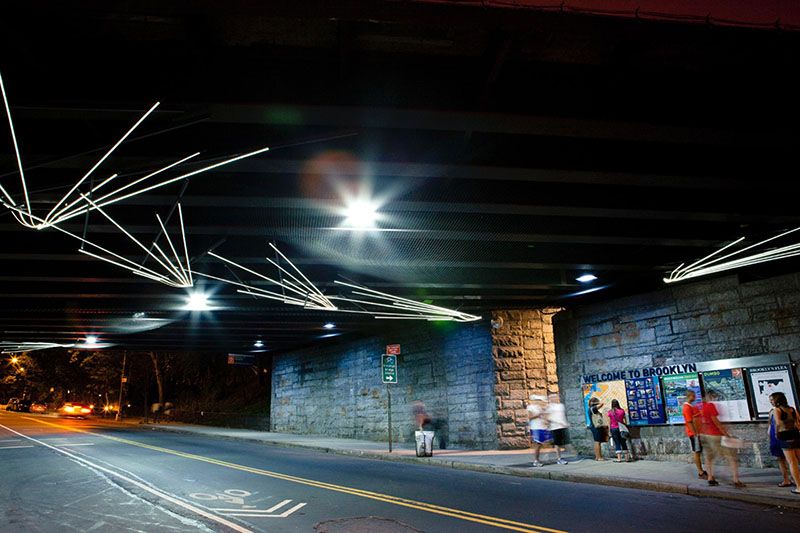 Image courtesy Tillett Lighting
Image courtesy Tillett Lighting
In a city that never sleeps, how do you design for the dynamics of spaces in both day and night? As a part of the Design Trust Council Spring 2017 programming series, “People Who Make Public Space,” we were invited to an exclusive, behind-the-scenes studio tour at Tillett Lighting Design Associates, one of country’s renown lighting design companies, based in Lower Manhattan office. The convivial evening was joined by representatives of city agencies, design industry and cultural institutions, and filled with conversations about the works and challenges of being a lighting designer.
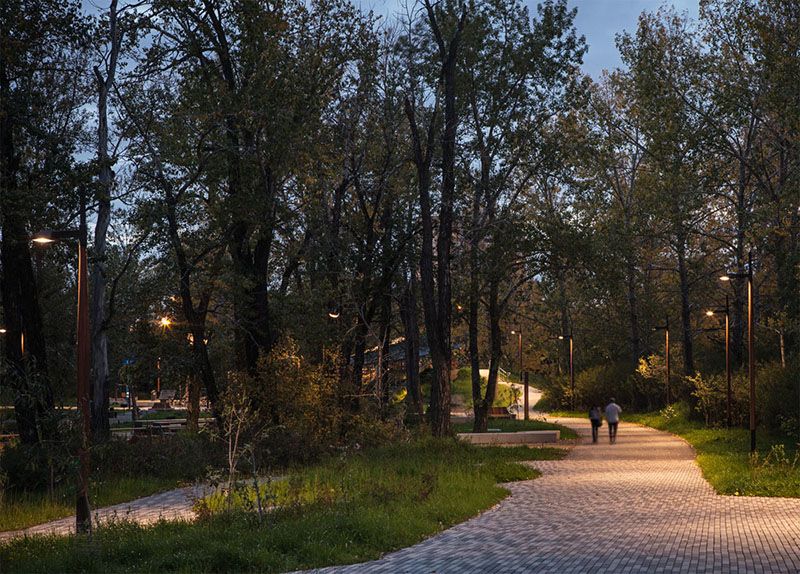 Image courtesy Tillett Lighting
Image courtesy Tillett Lighting
Born and raised in New York City, founder and principal Linnaea Tillett has always been fascinated by streetscapes and the public realm. Inspired by her early lighting design work in private housing, she found that clients were often unable to articulate the kind of lighting they want and why. For example, the quality of light one desires could be a result of childhood memories: parents turning off all the lights one by one to save energy at night. These common experiences inspired her to pursue a doctorate in environmental psychology, where she studied the close-knit relationship between lighting design and psychology. Currently, the office is involved in wide range of public and private projects that explore the perceptual, behavioral and psychological effects of light.
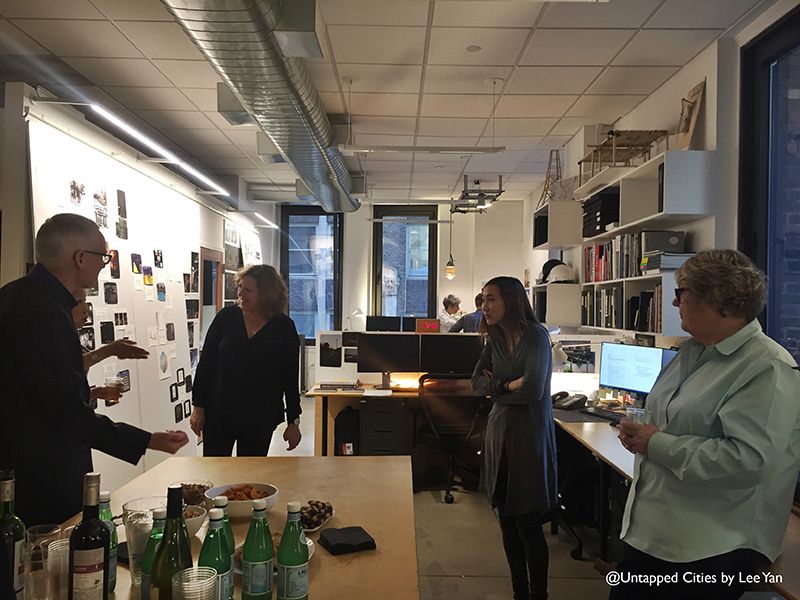
Just like architects design “white spaces,” Linnaea’s work celebrates “dark spaces.” She continually scrutinizes the meaning of night as space, as it is neither somewhere you can walk in and out of, nor is “night time” exactly determined by time. In other words, designing for the dark is to acknowledge the constant transformation of how this realm is being used and perceived, and to create an atmosphere for the these dynamics. Furthermore, when considering dark spaces, people are often impacted by their own emotional history. One of Linnaea’s biggest challenge was to help clients identify the source of their fear of darkness. As Linnaea put it, “fear trumps everything” and designing against fear often becomes the main objective of her work.
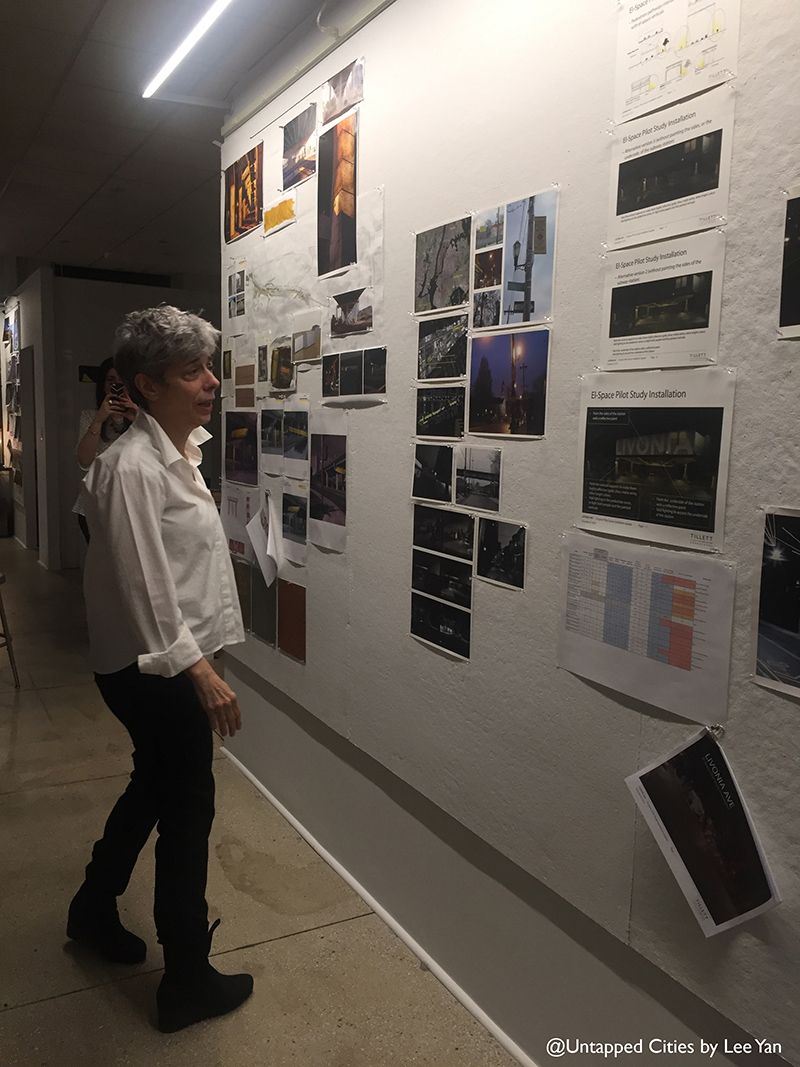
This aspect of lighting design is especially prominent in New York City. Tillett Design is working in parallel with the Design Trust to explore ways to revitalize spaces under elevated transportation infrastructure. The design initiative was first conceived by the Design Trust, who called together an interdisciplinary team of fellows to compile a study to inform the designs, programming and policies of these valuable urban spaces. Linnaea walked us through an El-Space pilot study installation at Livonia Avenue, conducted in collaboration with the Department of Transportation. The team proposes to apply reflective paint and add lighting fixtures to the vertical elements of the bridges. The design not only captures light in these underlit spaces, but creates a sense of warmth and safety for the neighborhood.
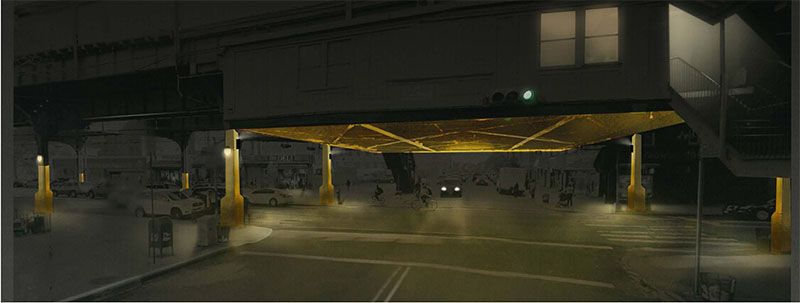 Image courtesy Tillett Lighting
Image courtesy Tillett Lighting
When designing for urban spaces, crime and safety is often one of the main considerations. Linnaea recalled her experience working with traffic engineers to determine why users feel scared despite lighting metrics show that light levels are up to the appropriate standards. She considers pedestrians concern with facial recognition and wayfinding, and a simple shift from measuring horizontal luminosity from ground to vertical luminosity from eye level did the job.
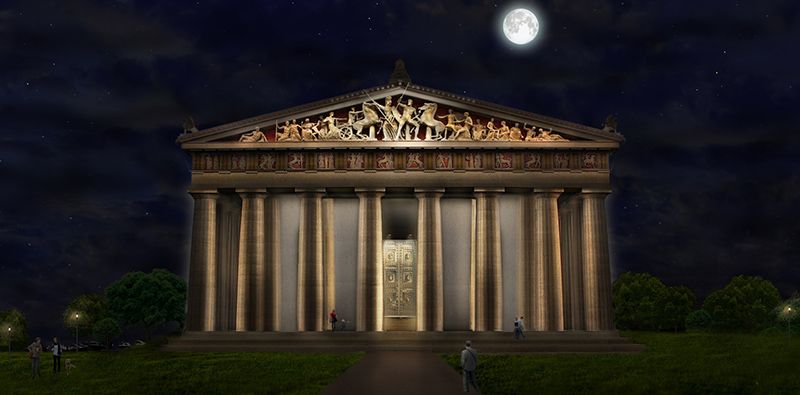 Image courtesy Tillett Lighting
Image courtesy Tillett Lighting
When asked about the role of color in her lighting design, Linnaea introduced her recent project for The Parthenon in Nashville, Tennessee. She shared her sentiments of the abyss between designers and clients, the former favors white lights while the latter desires more eye-catching colored lights. Nevertheless, Linnaea was successful in educating her clients on the variation of play and effect natural lighting can offer. For example, the array of ambiance between moonlight and the light hearth from a hearth. In this project, the team pays homage to history by emulating the greens and orange tint of bonfires and torches that ancient Greeks used to illuminate the structure.
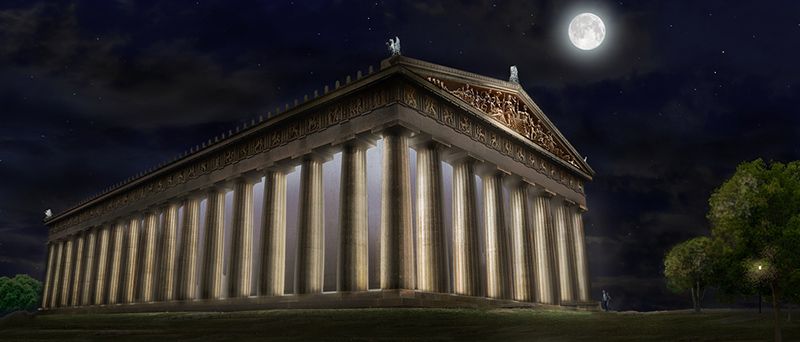
Image courtesy Tillett Lighting
Linnaea’s work not only explores the relationship between architecture, lighting and landscape, but also navigates between psychological and perceptual spaces. While dealing with realities of budgets and codes, her work continues to revel in the quality of light and celebrate the poetics of dark.
Next, check out What Lies Beneath: The Design Trust for Public Space Seeks to Transform the Spaces Under NYC’s Elevated Infrastructure
Subscribe to our newsletter